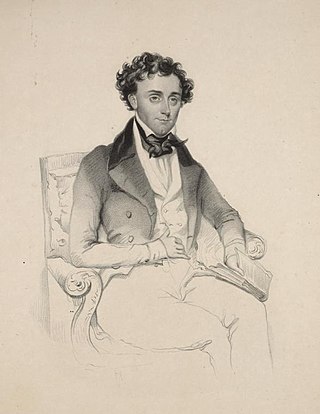
Thomas Dartmouth Rice was an American performer and playwright who performed in blackface and used African American vernacular speech, song and dance to become one of the most popular minstrel show entertainers of his time. He is considered the "father of American minstrelsy". His act drew on aspects of African American culture and popularized them with a national, and later international, audience.

Greenwich Theatre is a local theatre located in Croom's Hill close to the centre of Greenwich in south-east London.

The Bowery Theatre was a playhouse on the Bowery in the Lower East Side of Manhattan, New York City. Although it was founded by rich families to compete with the upscale Park Theatre, the Bowery saw its most successful period under the populist, pro-American management of Thomas Hamblin in the 1830s and 1840s. By the 1850s, the theatre came to cater to immigrant groups such as the Irish, Germans, and Chinese. It burned down four times in 17 years, a fire in 1929 destroying it for good. Although the theatre's name changed several times, it was generally referred to as the "Bowery Theatre".

Mechanics' Hall was a meeting hall and theatre seating 2,500 people located at 472 Broadway in New York City, United States. It had a brown façade. Built by the Mechanics' Society for their monthly meetings in 1847, it was also used for banquets, luncheons, and speeches held by other groups.

Thomas Souness Hamblin was an English actor and theatre manager. He first took the stage in England, then immigrated to the United States in 1825. He received critical acclaim there, and eventually entered theatre management. During his tenure at New York City's Bowery Theatre he helped establish working-class theatre as a distinct form. His policies preferred American actors and playwrights to British ones, making him an important influence in the development of early American drama.

The Chatham Garden Theatre or Chatham Theatre was a playhouse in the Chatham Gardens of New York City. It was located on the north side of Chatham Street on Park Row between Pearl and Duane streets in lower Manhattan. The grounds ran through to Augustus Street. The Chatham Garden Theatre was the first major competition to the high-class Park Theatre, though in its later years it sank to the bottom of New York's stratified theatrical order, below even the Bowery Theatre.
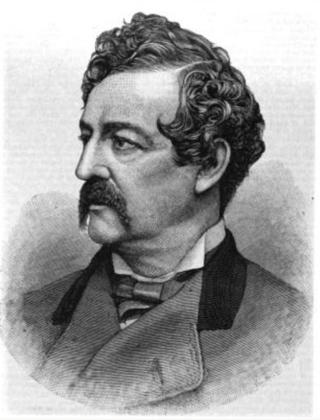
Francis S. Chanfrau was an American actor and theatre manager in the 19th century. He began his career playing bit parts and doing impressions of star actors such as Edwin Forrest and of ethnic groups.

The Park Theatre, originally known as the New Theatre, was a playhouse in New York City, located at 21–25 Park Row in the present Civic Center neighborhood of Manhattan, about 200 feet (61 m) east of Ann Street and backing Theatre Alley. The location, at the north end of the city, overlooked the park that would soon house City Hall. French architect Marc Isambard Brunel collaborated with fellow émigré Joseph-François Mangin and his brother Charles on the design of the building in the 1790s. Construction costs mounted to precipitous levels, and changes were made in the design; the resulting theatre had a rather plain exterior. The doors opened in January 1798.
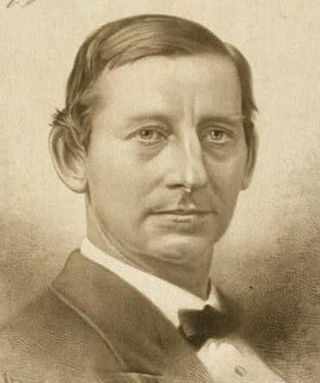
George Washington Lafayette Fox was an American actor and dancer who became known for his pantomime Clown roles, and who based the characterizations for these roles on his inspiration Joseph Grimaldi.

The Scala Theatre was a theatre in Charlotte Street, London, off Tottenham Court Road. The first theatre on the site opened in 1772, and the theatre was demolished in 1969, after being destroyed by fire. From 1865 to 1882, the theatre was known as the Prince of Wales's Theatre.

Francis Marion Brower was an American blackface performer active in the mid-19th century. Brower began performing blackface song-and-dance acts in circuses and variety shows when he was 13. He eventually introduced the bones to his act, helping to popularize it as a blackface instrument. Brower teamed with various other performers, forming his longest association with banjoist Dan Emmett beginning in 1841. Brower earned a reputation as a gifted dancer. In 1842, Brower and Emmett moved to New York City. They were out of work by January 1843, when they teamed up with Billy Whitlock and Richard Pelham to form the Virginia Minstrels. The group was the first to perform a full minstrel show as a complete evening's entertainment. Brower pioneered the role of the endman.

Tom show is a general term for any play or musical based on the 1852 novel Uncle Tom's Cabin by Harriet Beecher Stowe. The novel attempts to depict the harsh reality of slavery. Due to the weak copyright laws at the time, a number of unauthorized plays based on the novel were staged for decades, many of them mocking the novel's strong characters and social message, and leading to the pejorative term "Uncle Tom".

Three New York City playhouses named Wallack's Theatre played an important part in the history of American theater as the successive homes of the stock company managed by actors James W. Wallack and his son, Lester Wallack. During its 35-year lifetime, from 1852 to 1887, that company developed and held a reputation as the best theater company in the country.

The first theatre in New York City to bear the name The Winter Garden Theatre had a brief but important seventeen-year history as one of New York's premier showcases for a wide range of theatrical fare, from variety shows to extravagant productions of the works of Shakespeare. Initially known as Tripler's Hall or Metropolitan Hall, it burned down in 1854 and was rebuilt as The New York Theatre. Although it burned to the ground several times, it rose from the ashes under different managers, bearing various names, to become known as one of the most important theatres in New York history.

Henrietta Baker Chanfrau was an American stage actress.

John Hodges ; known as Cool White, was an American blackface minstrel entertainer, who wrote or popularized the song "Buffalo Gals", published by him in 1844 under the title "Lubly Fan". There is some dispute as to whether he composed the tune or adapted a traditional air.

Charles T. "Charlie" or "Charley" White (1821–1891), was an early blackface minstrel entertainer.
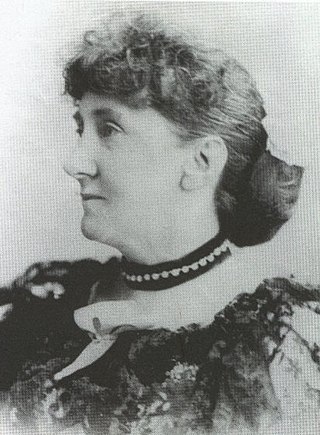
Sarah Thorne was a British actress and actress-manager of the 19th century who managed the Theatre Royal at Margate for many years. She ran a school for acting there which is widely regarded as Britain's first formal drama school. The Sarah Thorne Theatre Club in Broadstairs is named in her memory.
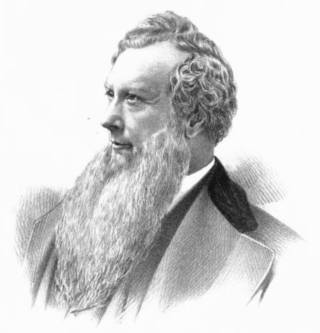
Richard Martin Hooley was an American theatre manager, minstrelsy manager, and one of the earliest theatre managers in Chicago. Hooley was born in Ballina, County Mayo, Ireland, and educated in Manchester before first coming to the United States in 1844. After being associated for two years with Christy's Minstrels, he organized a blackface minstrel company and toured England, returning to the United States by 1853. In 1855 he traveled to California and took over the management of Maguire's Opera House in San Francisco.
The Royal Lyceum was a small theatre in York Street, Sydney founded in 1854, which was redeveloped and renamed many times, finally as the Queen's Theatre, by which name it closed in 1882.




















